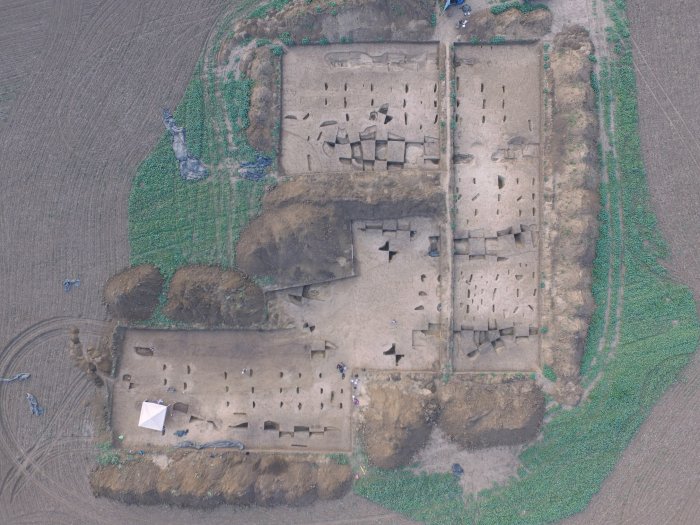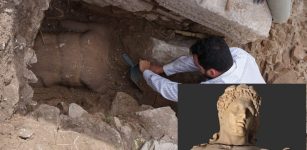Why Were Neolithic Houses Always Built Counterclockwise?
Conny Waters – AncientPages.com - It’s a well-known fact that most people are afraid of changes and our ancestors liked to follow certain traditions, but why did Neolithic people keep building their houses oriented counterclockwise?
According to researchers from the University of Kiel in Germany the answer lies in a phenomenon known among perception psychologists as "pseudo-neglect." This refers to the observation that healthy people prefer their left visual field to their right, and therefore divide a line regularly left of center.
Aerial photo of the excavation area of an Early Neolithic settlement near Vráble in Slovakia. Credit: © Nils Müller-Scheeßel
A Slovak-German research team has investigated the alignment of early Neolithic houses in Central and Eastern Europe. They discovered that the orientation of newly built houses deviated by a small amount from that of existing buildings, and that this deviation was regularly counterclockwise.
“Researchers have long assumed that early Neolithic houses stood for about a generation, i.e., 30 to 40 years, and that new houses had to be built next to existing ones at regular intervals.
By means of age determination using the radiocarbon method, we can now show that the new construction was associated with a barely perceptible rotation of the house axis counterclockwise. We see pseudoneglect as the most likely cause of this,” Archaeologist Dr. Nils Müller-Scheeßel, who coordinated the study, says.
This insight was made possible by the interpretation of one of the fastest-growing archaeological data sets at present, namely the results of geophysical magnetic measurements. Differences in the Earth's magnetic field are used to visualize archaeological features lying underground. Early Neolithic house ground plans belong to the best identifiable types of features.
"In recent years, we have discovered hundreds of Early Neolithic houses in our field of work in southwestern Slovakia using geophysical prospection methods. Excavating all these houses is neither possible nor desirable for reasons of monument conservation.
See also:
The Knap Of Howar: One Of The Oldest And Well-Preserved Neolithic Complexes Orkney, Scotland
Mysterious Megalithic Stones Of Carnac, France – An Unsolved Neolithic Enigma
8,000-Year-Old Nephrite ‘Frog-Like’ Swastika In Bulgaria’s Neolithic Settlement – Unearthed
The possibility of using pseudoneglect to bring the houses into a relative sequence without excavation and thus to break down the settlement activity of an entire small region raises our research to a completely new level," says Müller-Scheeßel. "Absolute dating using scientific methods must, of course, confirm the basic trend in every case."
Comparable archaeological observations at other places and times, show that similar changes in orientation also seem to apply to more recent prehistoric periods. It seems therefore evident that the significance of pseudoneglect extends far beyond the dating of early Neolithic houses.
Written by Conny Waters - AncientPages.com Staff Writer





















